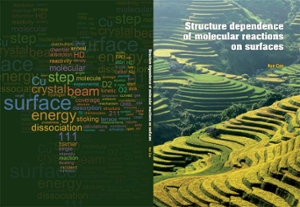Proefschrift
Structure dependence of molecular reactions on surfaces
The research presented in this thesis makes use of small molecules (as H2 , D2 and O2 ) on well-defined single crystal surfaces (flat Pt(111), flat Cu(211) and curved Pt(111)) to elucidate the role of surface structure and degrees of freedom in the reactant in specific surface reactions.
- Auteur
- Cao, K.
- Datum
- 11 oktober 2018
- Links
- Thesis in Leiden Repository

The research presented in this thesis makes use of small molecules (as H2 , D2 and O2 ) on well-defined single crystal surfaces (flat Pt(111), flat Cu(211) and curved Pt(111)) to elucidate the role of surface structure and degrees of freedom in the reactant in specific surface reactions. For D2 on Pt(111), we find at most a very weak signature of geometric corrugation at large polar angles. For D2 on Cu, we find an anomalous reduced dissociative sticking probability for the stepped Cu(211) surface compared to Cu(111). For hydrogen on curved Pt(111), the HD formation increases linearly with the step density at low incident energy. A surface reconstruction on curved Pt(111) surface is observed on both A- and B-step side when the crystal is annealed at 1200 K. For O2 on curved Pt(111), at low incident energy, steps dominate reactivity by providing an indirect dynamical trapping mechanism. At higher impact energy, a direct chemisorption mechanism dominates. The step facet favors molecules impacting with their internuclear axis parallel to its surface.
